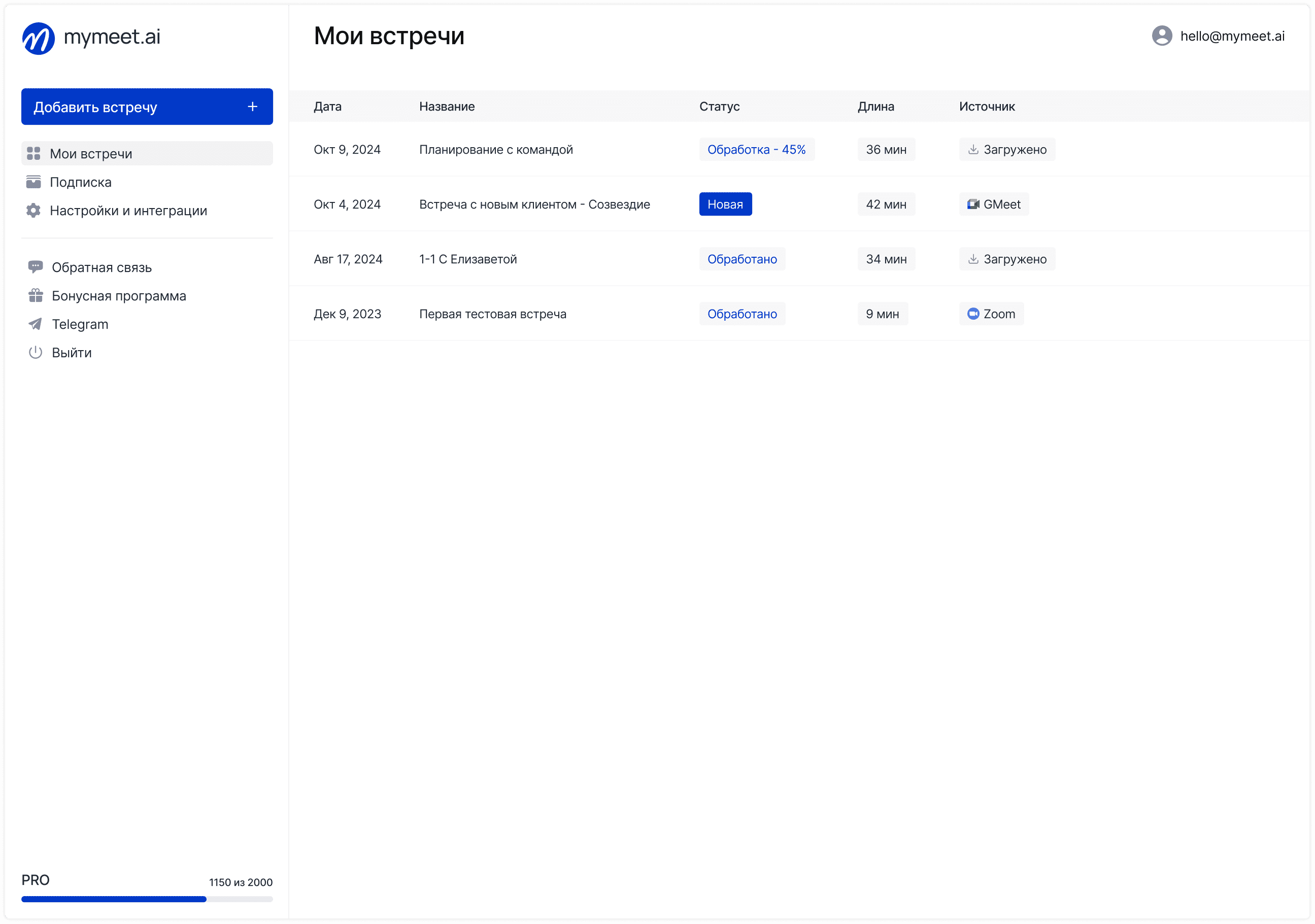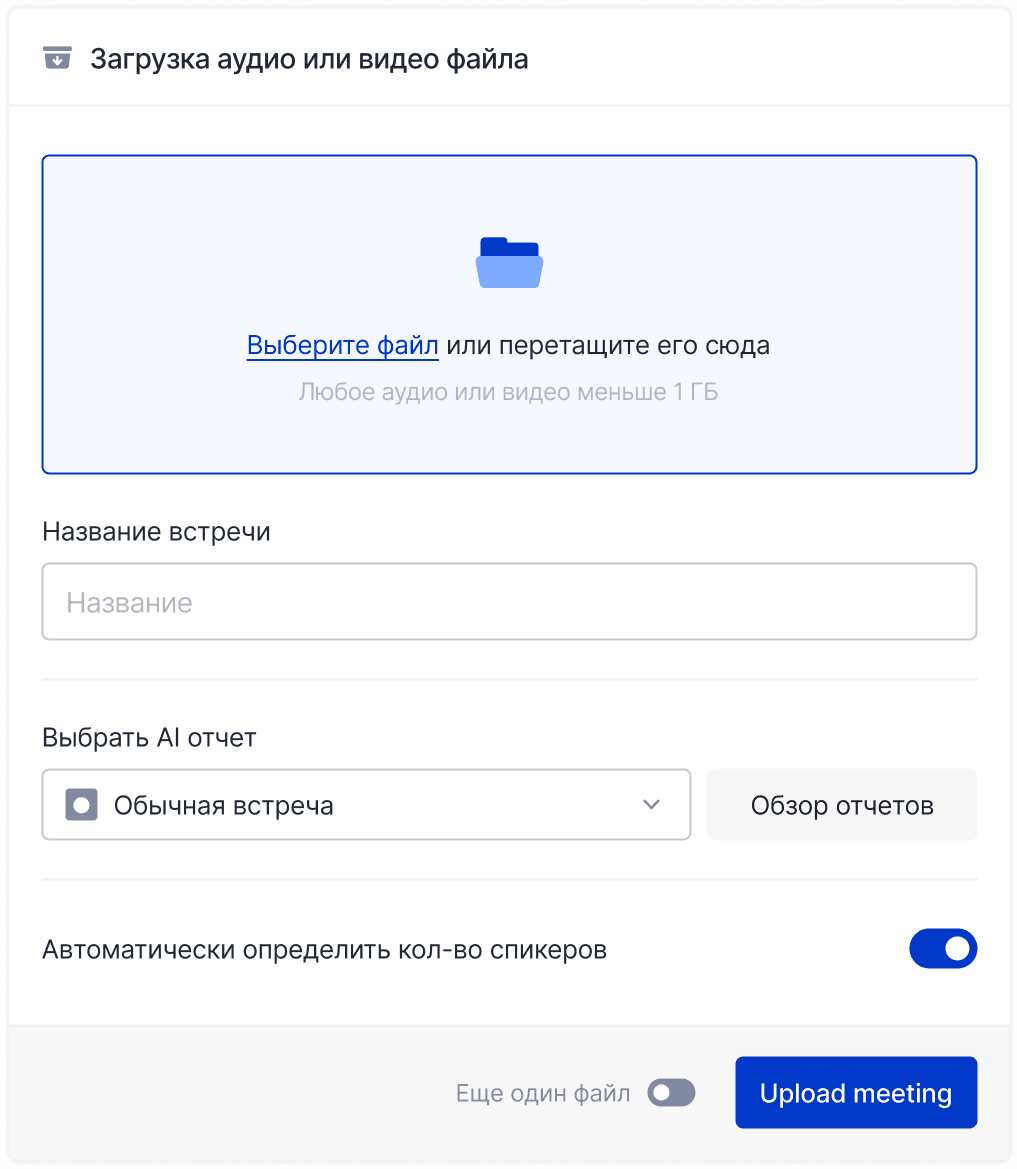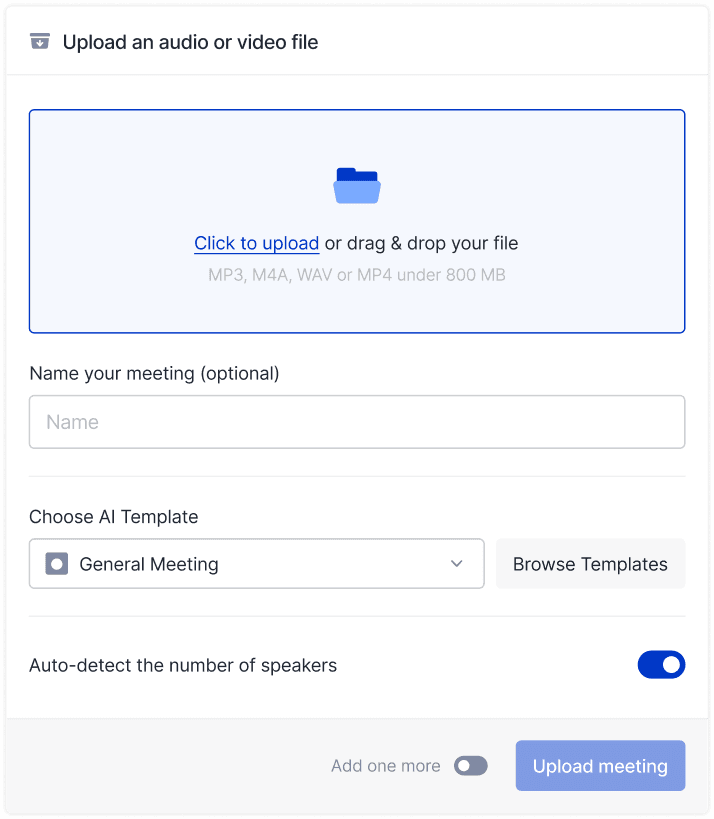Meeting Tips

Radzivon Alkhovik
Apr 3, 2025
"Yet another meeting that could have been an email" — you've likely heard this phrase or even said it yourself. According to Doodle's 2019 State of Meetings Report, professionals lose about 13 days a year in unproductive meetings, costing businesses billions of dollars.
But the issue isn't with meetings themselves — the problem is how they're conducted. Properly organized team meetings can inspire, unite, and significantly boost productivity. After 15 years of working with various teams, I'm convinced: we need fresh team meeting ideas that transform a boring obligation into an effective development tool.

Ideas for Improving Regular Work Meetings
Let's start with how to improve standard work meetings — the ones that occur regularly and form the foundation of team interaction.
Rethink Your Stand-up Format
The classic daily stand-up following the "what's done, what's planned, what obstacles exist" format can quickly turn into a monotonous ritual. Try these variations:
Rotating moderator. Each day, a new team member leads the stand-up. This not only adds variety but gives everyone experience in moderation and a better understanding of team dynamics.
Reverse stand-up. Instead of the standard three questions, try alternatives: "What did I learn yesterday?", "Who can I help today?", "What am I most excited/concerned about in my current work?"
Timeboxed stand-up. Use a 60-second timer per person. This teaches the team to focus on what's most important and respect each other's time.
The IT director of a major pharmaceutical company shared with me: "After introducing rotating moderators at our stand-ups, people started listening to colleagues much more attentively. The level of mutual understanding in the team noticeably improved."
The "Start, Continue, Stop" Method

This simple format works excellently for weekly or monthly reviews. The essence of the approach is to have a structured discussion around three key questions: what should we start doing, what's working well and should continue, and what practices should we abandon. This method allows for a structured approach to improvements and gives everyone a voice.
A marketing agency director told me that after implementing this format, the number of initiatives from regular employees that were actually implemented increased by 40%. Employees felt their opinions were truly valued, and management received valuable ideas "from the front lines."
Separating Meetings by Type

One of the main reasons for meeting inefficiency is mixing different goals. Clearly define and separate the types of your meetings. Informational meetings serve to exchange news and status updates, where the goal is for all participants to gain the same understanding of the situation. Decision-making meetings aim to make specific decisions and require a strict agenda with a clear description of the expected outcome. Creative meetings, designed for generating ideas and solving problems, need a free atmosphere and an absence of criticism during the proposal stage.
The key point is that participants should know the type of meeting in advance and prepare accordingly. This significantly increases efficiency and eliminates disappointment when people come with different expectations.
Silent Updates

A significant amount of information can be shared before the meeting, freeing up time for truly important discussions. The practice of preliminary notes, where all participants fill out a brief form with updates in advance, allows the meeting to focus only on issues that require collaborative resolution.
Creating a visual dashboard with key team metrics, accessible to everyone, reduces the need for lengthy status reports. And using tools like Slack or Notion for asynchronous updates also helps save time in meetings.
The leader of a distributed development team reported: "After introducing the 'write, don't speak' rule for routine updates, our meeting time decreased by 30%, and productivity increased. Now we only discuss what truly requires interaction."
Creative Ideas for Team Meetings
Sometimes teams need to step outside the usual format to see situations in a new light. Here are some approaches that will help shake up conventional thinking.
Unusual Locations
Psychological research shows that changing environments stimulates creative thinking. Walking meetings are not only good for health but also enhance creativity — Steve Jobs was known for his "walking meetings." Thematic spaces corresponding to the discussion topic, such as a café with excellent service for a conversation about customer experience, help set the right mood. And coworking spaces or creative environments can give the team new perspectives.
"When we moved our strategic session from the office to an art gallery, the number of innovative ideas proposed tripled," shared a creative director from an advertising agency.
Role-Based Formats
Assigning unusual roles can change the dynamics of discussion and open up new perspectives:
"Devil's advocate." Designate someone whose task is to constructively criticize each proposed idea. This helps identify weaknesses before implementation.
Debates. Divide the team into two groups and ask them to defend opposing viewpoints, regardless of personal beliefs. This broadens understanding of the problem.
Edward de Bono's "Six Thinking Hats" method. Each "hat" represents a certain type of thinking: facts, emotions, criticism, optimism, creativity, and process organization.
Gamification of the Process
Game elements can turn an ordinary meeting into an engaging process. Timeboxing as a competition, where the team divides into subgroups solving separate subtasks, adds a healthy spirit of competition. "Idea Bingo" with cards of key concepts that are marked as they appear in the discussion makes the process more dynamic. And the "Yes, and..." principle, borrowed from improvisational theater, where participants must accept the proposed idea and develop it further instead of criticizing, stimulates creative thinking.
"Game elements completely changed the atmosphere of our monthly reviews. People began to look forward to them instead of making up excuses for absence," reported a sales department head.
Ideas for Virtual and Remote Teams
Remote work has become the new norm, and it requires a special approach to organizing team meetings. The right digital tools can make virtual meetings even more effective than in-person ones.
Effective Digital Tools
Interactive whiteboards (Miro, Mural) allow you to visualize ideas and work on them collaboratively in real time. Voting and decision-making tools (Slido, Mentimeter) make it possible to quickly gather opinions and reach consensus. And timers and meeting facilitators (Time Timer, Zoom's Breakout Rooms feature) help structure time and break large groups into smaller ones for effective work.
Virtual Activities and Attention Management
To strengthen team bonds in a remote format, organize virtual coffee breaks — informal 15-minute meetings with no work agenda. Online games and quizzes at the beginning or end of a work meeting help create an informal atmosphere. And virtual tours, where employees show interesting places in their city or workspace, help people get to know each other better.
Maintaining focus in virtual meetings is more difficult, so it's important to:
Establish a "cameras on" rule — seeing participants' faces is critically important for effective communication
Conduct interactive engagement checks, periodically asking questions or using polls
Have short sessions with frequent breaks (optimally 25-30 minutes of work followed by a 5-minute break)
"After introducing the structure of 25 minutes of work + 5 minutes of break, participation in our weekly virtual meetings increased from 70% to 95%," noted the manager of a distributed IT support team.
For global teams in different time zones, asynchronous formats are especially important: documenting all discussions, rotating meeting times, and using audio/video updates instead of text messages to maintain personal contact.
Meetings for Team Building and Morale Boosting
Not all meetings need to be purely work-related. Some are aimed at strengthening team spirit and employee well-being.
Recognition and Gratitude Rituals
Short but powerful practices can significantly boost morale. A "Gratitude Circle," where each participant thanks a colleague for specific help over the past week, creates an atmosphere of appreciation. "Celebrating small victories" at the beginning of meetings and "Star of the Week" — weekly recognition of a team member who demonstrated exceptional work, strengthen team spirit and motivation.
Informal Communication and Learning
Structured opportunities for strengthening connections between team members, such as "coffee lotteries" (randomly pairing employees for informal conversations) or "paired mental walks" (15-minute walks to discuss non-work topics), promote better colleague relationships.
Meetings focused on learning create a culture of continuous growth. "Teach me something" sessions, where team members conduct short master classes, reviews of professional literature, or discussions of the "mistake of the month" without judgment, form a safe environment for knowledge exchange and experimentation.
"When we introduced monthly 'Teach me something' sessions, the level of intra-team expertise grew dramatically. People began to understand each other's work much better," said the technical director of a startup.
mymeet.ai: How an AI Assistant Helps Implement New Meeting Formats

Implementing innovative meeting formats requires additional effort, especially during the adaptation phase. This is where modern technologies come in, particularly tools based on artificial intelligence.

mymeet.ai is an AI assistant for conducting meetings that helps teams maximize the benefits of various meeting formats:
Automatic documentation. The system records and transcribes the meeting, highlighting key ideas, decisions, and tasks. This allows participants to fully focus on the discussion.
Effectiveness analytics. mymeet.ai tracks key metrics: participant engagement, the ratio of speaking time between different people, and adherence to the agenda.
Support for hybrid formats. The system ensures equal participation for those present in person and remote employees.
Intelligent suggestions. Based on analysis of previous meetings, mymeet.ai suggests optimal formats for achieving specific goals.

A product team leader shared his experience: "After implementing mymeet.ai, the time spent documenting meetings decreased by 90%. But most importantly, we got objective data on which formats work best for our team, and we were able to optimize all our meetings."

Ideas for Solving Specific Team Problems
Different situations require different approaches. Here are some specialized solutions for specific problems.
Meetings for Overcoming Conflicts
Conflicts are inevitable in any team, but they can be turned into opportunities for growth. Structured dialogue, where each side takes turns presenting their position without interruptions, creates a foundation for mutual understanding. The "common enemy" method helps reframe the conflict so that parties have to collaborate against a common problem. And a facilitated retrospective with a neutral moderator helps discuss complex issues without escalating emotions.
Formats for Stimulating Innovation and Crisis Management
When a team needs a breakthrough, try reverse brainstorming: instead of looking for solutions to a problem, first look for ways to make it worse. The "Worst Possible Idea" method, where deliberately ridiculous solutions are proposed, and the "What would X do?" approach (imagining how a well-known company from another field would approach the problem) stimulate creative thinking.
For crisis situations, creating a "war room" — a space entirely dedicated to solving the crisis, with visualization of the problem, resources, and progress — is particularly effective. A three-tier meeting system (strategic, tactical, and operational levels) with a clear escalation system and daily 15-minute check-ins allow for rapid coordination of actions.
"During a critical system failure, our three-tier meeting structure reduced response time by 60% compared to previous incidents," noted the CIO of a financial company.
Measuring Meeting Effectiveness
How do you know if your new approaches to meetings are working? You need measurable indicators and feedback systems.
Productivity Assessment and Feedback Systems
Objective metrics help track improvements: a decision index (number of specific decisions per meeting), task completion rate (percentage of tasks completed by the agreed deadline), and time to action (period from discussion to implementation).
For qualitative feedback, use:
Short anonymous surveys immediately after the meeting
A traffic light assessment system (green, yellow, or red card)
Periodic in-depth retrospectives of meeting formats (quarterly)
Tracking ROI from Meeting Time
Meetings are an investment of time that should pay off. Calculating meeting cost (time × number of participants × average hourly rate) helps understand the real price of each meeting. Evaluating the value generated and analyzing trends in these metrics over time shows whether your improvements are working.
"When we began openly showing the cost of each meeting to the team, the number of unnecessary participants decreased by 40%, and productivity increased," shared the leader of a consulting group.
Practical Plan for Implementing New Team Meeting Ideas
Even the best ideas won't benefit without proper implementation. It's important to introduce changes gradually: start with pilot formats in less critical meetings, introduce innovations sequentially, and give the team an "adaptation period" for experiments.
Overcoming resistance requires explaining not just "what" is changing but also "why." Involving skeptics in the development and piloting of new formats often turns them into the main supporters of change. Documenting and sharing success stories shows real improvements and motivates the team.
To systematize your approach, create a team meeting library — a documented description of working formats with process details, necessary materials, and typical results. A "format menu" will help organizers choose the appropriate option for specific goals, and an appointed "library keeper" will collect new ideas and update existing practices.
"Our meeting format library has become one of the company's most valuable internal resources. New managers use it as a guide, and experienced ones use it as a source of fresh ideas," said the HR director of a technology company.
Conclusion
Team meetings can either be a waste of time or a powerful tool for growth and development. The difference lies in the approach to their organization and willingness to experiment with new formats.
Key principles of effective team meeting ideas we've covered:
Clear purpose for each meeting and a corresponding format
Involvement of all participants through various techniques
Balance between structure and creative freedom
Regular evaluation of effectiveness and readiness for change
Use of technology to automate routine aspects
It's worth remembering that meeting culture reflects the overall company culture. Teams that pay attention to the quality of their meetings usually demonstrate higher levels of collaboration, innovation, and performance.
Start small — choose one or two ideas from this article and implement them in the coming weeks. Pay attention to the team's reaction and measurable results. Gradually expand your arsenal of approaches, creating your own unique culture of productive and inspiring meetings.
Ultimately, the goal isn't to conduct a perfect meeting, but to create a team that effectively collaborates, solves problems, and moves toward common goals. And properly organized team meetings are one of the most powerful tools on this path.
FAQ: Answers to Common Questions About Team Meeting Formats
How often should I change the format of regular meetings?
Avoid frequent radical changes — this disorients the team. It's optimal to make small improvements every 1-2 months, and more substantial changes quarterly, based on feedback.
What should I do with participants who dominate discussions?
Introduce structured formats with equal time for everyone (for example, the "round table" method). The "two hands rule" is also effective — a person can speak again only after two other participants have spoken.
How do I balance creativity and structure in meetings?
Divide the meeting into explicit phases: first divergent thinking (creative phase without criticism), then convergent (structured analysis and selection). Clearly mark the transition between phases.
What is the optimal group size for a productive meeting?
Research shows that the optimal number of participants for decision-making is 5-8 people. For creative sessions, a group of up to 12 people can be effective, but with larger numbers, it's worth using methods to divide into subgroups.
How do I implement new team meeting ideas in a conservative company?
Start small and demonstrate concrete results. Focus on business metrics (time savings, faster decision-making) rather than the innovation of the format itself. Find influential allies among leadership.
How do I maintain energy during long strategic sessions?
Use the rule of "no meetings longer than 90 minutes without a break." Alternate activity formats (discussion, written work, movement). Implement short energizers — two-minute physical activities that increase oxygen levels in the brain and improve concentration.
Radzivon Alkhovik
Apr 3, 2025








